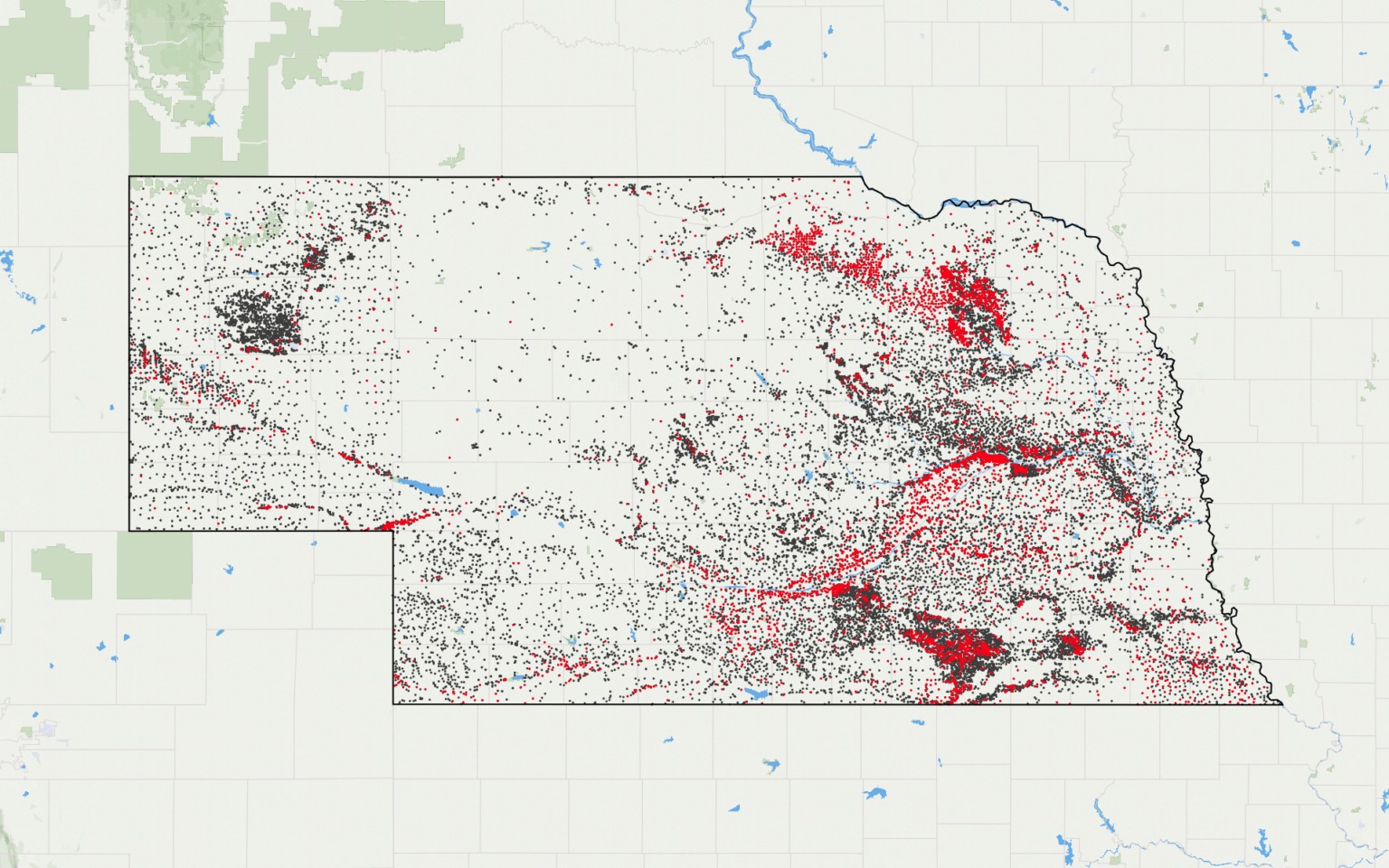Water Quality
Water quality can apply to several areas such as drinking water, recreational use, and irrigation for agricultural purposes.
Drinking Water Monitoring & Compliance
The Monitoring & Compliance section ensures that public water systems comply with the Nebraska Safe Drinking Water Act, which is derived from the Federal Safe Drinking Water Act, that sets safe standards for contaminants in drinking water. This includes over 1,300 public water systems in Nebraska, serving approximately 80% of the people in the state. Monitoring & Compliance ensures compliance with requirements for over 90 potential drinking water contaminants. When necessary, this section provides guidance and issues enforcement actions to help a system return to compliance. Below is a group list of contaminants that are monitored:
- Nitrate - fertilizers
- Coliform bacteria (including E.coli) - bacteria
- Lead and Copper – service lines/plumbing
- Lead and Copper Revised Rule - lead line inventory
- Volatile Organic Chemicals (VOCs) – chemicals used in manufacturing
- Synthetic Organic Chemicals (SOCs) – pesticides and herbicides
- Inorganic Chemicals - naturally occurring contaminants in Nebraska’s geologic formation
- Disinfection byproducts (DBPs) – systems that disinfect
- Radionuclides – naturally occurring radiologic decay from Nebraska’s geologic formation
- Surface Water Treatment – systems that use lakes or rivers as their primary water supply
* PFAS in Public Water Supply Systems
A program specialist is assigned to each of eight regions within the state. Please contact the Region 8 compliance officer if you need regulatory assistance:
Bill Taylor
308-763-8926
Bill.taylor@nebraska.gov
Nitrate in Drinking Water Study
The Nebraska Department of Water, Energy, and Environment (DWEE) has released a report following the completion of the Nebraska Nitrate in Drinking Water Study. Funding for the study came from the passage of LB 814 during the 2023 legislative session, at the request of Governor Jim Pillen. The goal of this study was to provide an analysis and recommend viable solutions for nitrate-affected drinking water, including private domestic wells, which are not regulated by the Safe Drinking Water Act (SDWA). This study focuses on nitrate in groundwater being used for drinking water.
To view the full study please visit: https://dee.nebraska.gov/water-quality/nitrate-drinking-water-study

Photo by Flatwater Free Press
Lead in Drinking Water
Measures taken during the last two decades have greatly reduced exposures to lead in drinking water. However, lead can still be found in some older homes in interior water pipes, solder, or pipes connecting a house to the main water pipe in the street. The only way to know whether your tap water contains lead is to have it tested.
Cities and villages typically test for lead in their upkeep of public water systems, however, if you suspect you still have a lead issue in your water, please contact PPHD to do a lead test of your water.
Contact Melissa Haas, mhaas@pphd.ne.gov, or call 308-487-3600 ext. 108 to find out how to test your water today.
You can also order a lead in water test from the DHHS Public Health Environmental lab for a small fee. To order a lead in water test, call (402)-471-2122 or visit: https://dhhs.ne.gov/Pages/Public-Health-Lab.aspx
Public Beach Sampling
During the months of May to September, the Nebraska Department of Water, Energy, and Environment conducts weekly sampling of public beaches across Nebraska. This sampling will tests for microcystin – a toxin produced by harmful algal blooms (HABs), also known as toxic blue-green algae – and E. coli bacteria at 55 public beaches at 50 recreational lakes across the state.
In coordination with the Nebraska Department of Health and Human Services, the state will issue Health Alerts for HABs when test results indicate microcystin are at levels above 8 parts-per-billion (ppb).
To view your local area to find any alerts, visit: https://deq-iis.ne.gov/zs/bw/